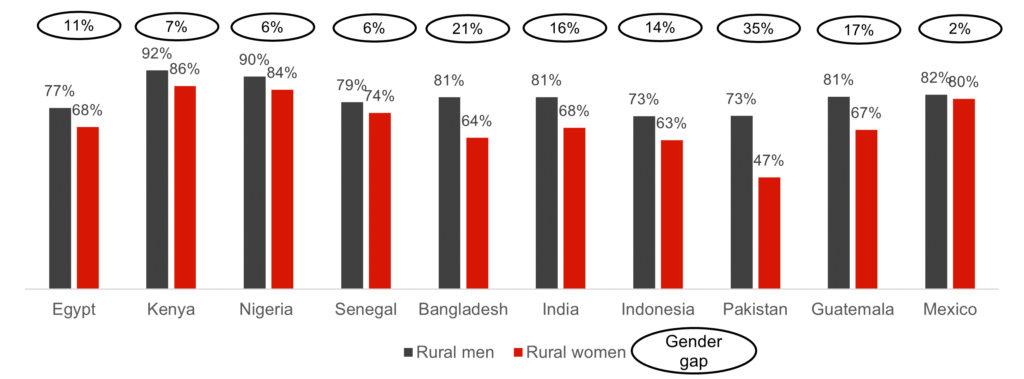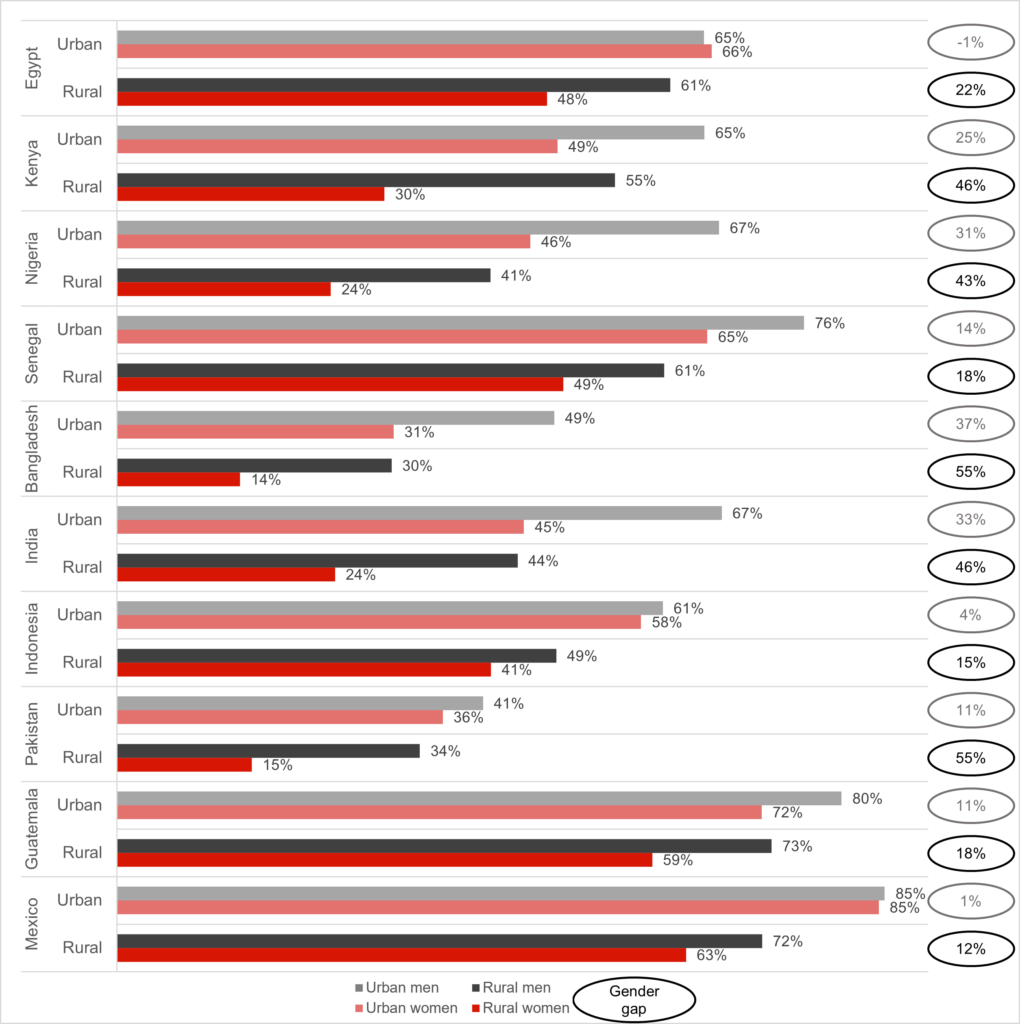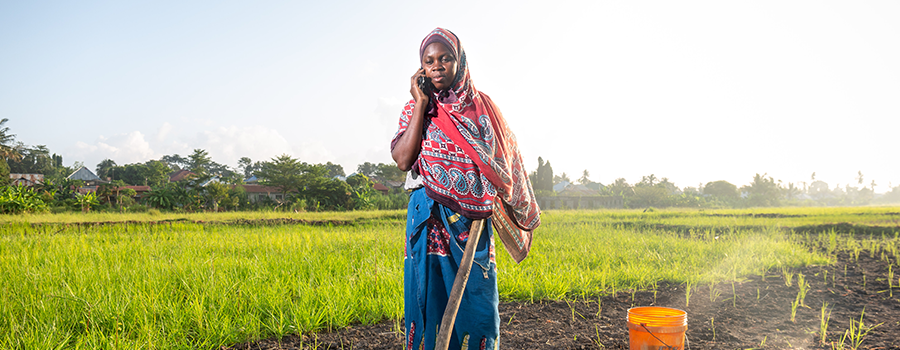This blog is a deep dive into mobile access and use among rural women. It draws on data from the GSMA’s Consumer Survey 2021, a nationally representative survey conducted in ten low- and middle-income countries. Note that ‘rural’ is defined in accordance with census data and local national statistics offices and may vary between countries.
Rural women are the most digitally excluded
In all ten countries covered in GSMA’s Consumer Survey 2021 rural women are less likely than rural men to own a mobile (Figure 1). Rural women also have lower levels of mobile ownership than urban men and women. Mobile gender gaps in rural areas tend to be wider than those in urban areas, highlighting that rural woman are being left behind.
When someone owns their own handset, they are much more likely to use mobile internet and the type of handset they own matters. In particular, smartphone ownership significantly increases mobile internet use, but rural women have lower levels of smartphone ownership compared to rural men, urban men and urban women.
Figure 1: Rural mobile ownership, by country

a
As such, rural women in survey countries are less likely to use mobile internet than rural men, urban men, or urban women (Figure 2). In Nigeria, for instance, mobile internet is used by 67% of urban men, 46% of urban women, 41% of rural men, but only 24% of rural women. In fact, across nine of our ten survey countries (except Mexico) between 51% and 76% of the women that are not yet using mobile internet live in rural areas. And in every survey country, the rural gender gaps in mobile internet use are wider than the urban gender gaps. Even in countries where there is a small gender gap in mobile internet use overall, such as Mexico and Indonesia (3% and 8%, respectively) in the rural context the gender gap is notable (12% and 15% respectively).
Figure 2: Urban and rural mobile internet use, by country

For rural women who do own a mobile, the benefits are clear
We asked mobile owners the degree to which mobile helps them in various aspects of their life and, despite the relatively low levels of mobile ownership and mobile internet use in rural areas, many rural female mobile owners reported that they see these benefits. Across all ten survey countries:
- Between 69% and 91% of rural female mobile owners reported that mobile helps them with day-to-day activities and makes them feel safer.
- Between 39% and 83% of rural female mobile owners reported that mobile gives them access to information that would not have had otherwise.
- Between 47% and 85% of rural female mobile owners, for whom it was relevant, reported that mobile helps them with their work or business.
- Between 43% and 48% of rural female mobile owners, for whom it was relevant, reported that mobile helps them with their education or studies.
Even in countries where overall mobile penetration is lower, the segment of rural women who are mobile owners tend to report benefits of mobile to a similar degree as urban female owners. Furthermore, once rural women own a mobile, they are using their phones for similar use cases as other mobile owners e.g. primarily for network calls, instant messaging, social networking and watching free videos.

Why are rural women lagging so far behind?
Awareness of mobile and mobile internet is a key initial barrier to adoption for anyone, and awareness levels are lowest among rural women. For example, in Kenya 93% of urban men, 84% of rural men and 81% of urban women are aware of mobile internet compared to just 69% of rural women. In all survey countries at least three quarters of urban women are aware of mobile internet whereas this was true for rural women in only half of the countries.
Once rural women are aware of mobile internet, the barriers they face to adopting mobile internet are similar to those experienced by rural men, and also urban men and women: handset affordability and a lack of basic literacy and digital skills. But rural women tend to feel these barriers more acutely due to structural inequalities and social norms. Social norms preventing women’s access and use of mobile tend to be stronger and more pervasive in rural settings making it difficult for rural women to even access mobile handsets or to find support to use them. For example, rural women usually spend more time than men doing paid and unpaid household work, limiting their mobility, and gatekeepers’ may restrict who women can interact with e.g. mobile agents. As such, the compound effect of being rural and a woman means that social norms will likely play an even larger role in preventing their uptake of mobile phones and the internet.
Reaching rural women requires a concerted effort but the benefits could be huge
Tackling the barriers rural women face to accessing and using mobile phones will require significant and targeted action as they are currently being left the furthest behind. But addressing this mobile gender gap is likely to produce the greatest benefits, given they make up the majority of the unconnected in low- and middle-income countries, resulting in substantial social and commercial gains for rural women and their families, communities, and economies more broadly.
Rural gender-disaggregated data from the GSMA’s Consumer Survey 2021 is featured in the FAO’s ‘The Status of Rural Women in Agri-food Systems’ report, published in April 2023.

The Connected Women programme is funded by the UK Foreign, Commonwealth & Development Office (FCDO) and the Swedish International Development Cooperation Agency (SIDA), and is supported by the GSMA and its members.


